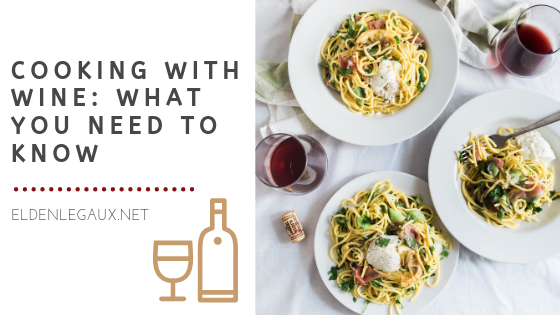Whether you have a half-empty bottle to get rid of or you are experimenting with new recipes, adding wine to your cooking can be a great way to enhance flavors in your meal. There are several ways you can incorporate wine into a meal. Marinades, glazes, and sauces are all great places to start that will add a delicious flavor palate to your dishes. While cooking with wine can be fairly simple, there are a few key points you need to be aware of before adding it to your cooked meals. Here are the basic techniques to know before cooking with wine:
Picking the right wine for your meal
The first thing to remember when choosing a wine to cook with is to pick something that you would normally drink. If you do not like the taste of a certain wine, chances are you will not enjoy it in your dish. Avoid wines labeled as “cooking wine” as they are usually lackluster in taste and quality. It isn’t necessary to splurge for expensive wine. However, the wine you choose should be of decent quality and flavor.
Next, it is important to consider the flavor palettes and components that makeup wine. Generally, white wine pairs well with food such as seafood, chicken, citrus, mushrooms, and asparagus. Red wines should be saved for darker meats like beef, in addition to desserts that include berries or chocolate.
The alcohol in wine evaporates while cooking, leaving behind aroma and flavor which will help enhance the other ingredients in the meal. Alcohol will assist in breaking down fats in other ingredients, thus making their flavors stand out even more. Other components to be aware of when choosing wine for your cooking include sugar, acidity, and tannins.
Sugar: When cooking with sweet wines, such as Moscato or white zinfandel, it is best to avoid vegetables that are high in sugar, such as carrots, leeks, and onions.
Acidity: Keep in mind that while all wines are acidic, some contain higher levels of acidity. Ingredients such as lemon juice or vinegar should be reduced in this case, to prevent over acidity or changing of the flavor palettes. Also, it is important to note that stainless steel or cast iron pans are the best pans to use as they are non-reactive and will not cause discoloration.
Tannins: Tannins are most easily identified by the sensation they cause, rather than flavor. Very dry wines, such as red wines, are known to have higher tannin levels. Overall, tannins affect the texture of wine and are caused by the thickness of the skin on the grapes used to make the wine. This is one reason why red wines taste much better when paired with dark meat instead of being used in a light sauce.
